The Huntington’s blog takes you behind the scenes for a scholarly view of the collections.
A Magic Brew?
Posted on Fri., Oct. 31, 2014 by
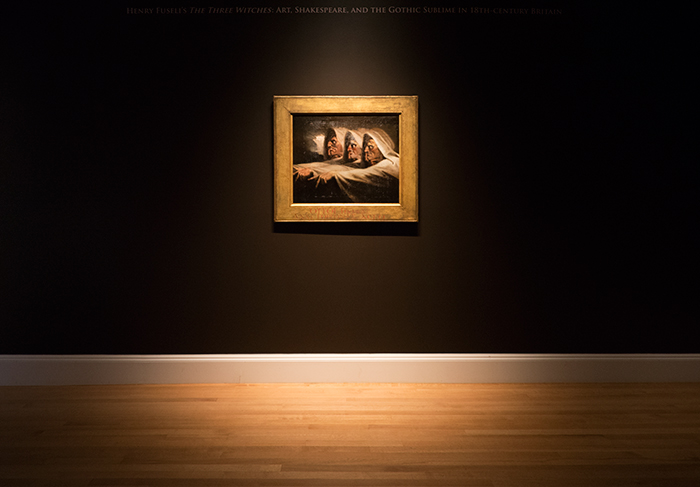
Henry Fuseli’s The Three Witches, recently acquired by The Huntington, is currently on view on the second floor of the Huntington Art Gallery.
It’s as if Henry Fuseli (1741–1825), the Anglo-Swiss artist who created the recently acquired painting The Three Witches (1782), had concocted a magic brew to ensure his canvas would eventually end up among The Huntington’s treasure trove of artworks. Recipe: Take a picture that would be at home in The Huntington’s rich holdings of late 18th and early 19th century British painting, add a handful of connections to William Blake, Joshua Reynolds and other artists well represented in the collections, sprinkle in a thematic element tying the work to The Huntington’s Shakespeare materials, stir well and…poof, The Three Witches.
The dramatic and mysterious oil painting, portraying the three witches from Shakespeare’s Macbeth, is a fine example of Fuseli’s artistry as a master of light and shadow who favored the supernatural. The work had been in private hands until being purchased by The Huntington. It is currently on view in the Huntington Art Gallery, after several months of in-house conservation treatment.
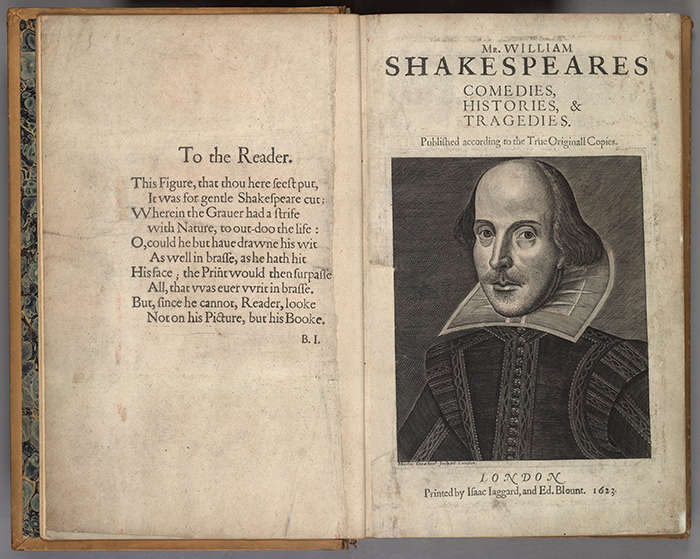
One of the Huntington Library’s most prized possessions is this first folio edition of William Shakespeare plays published in 1623.
The painting will complement two related installations, "Wrestling with Demons: Fantasy and Horror in European Prints and Drawings from The Huntington’s Art Collections" (Works on Paper Room of the Huntington Art Gallery, open now through Dec. 15, 2014) and "Eccentric Visions: Drawings by Henry Fuseli, William Blake, and Their Contemporaries" (second floor of Huntington Art Gallery, opening Nov. 22, 2014–March 16, 2015).
Here are some of the far-reaching associations connecting the work to The Huntington’s collections:
British painting: The Three Witches will be in good company alongside titans of late 18th and early 19th-century British painting housed in the Huntington Art Gallery. Fuseli is one of the most celebrated, notorious and inventive artists of the period. “Given the fame of The Huntington’s collection of 18th-century British painting, it may come as a surprise that we did not already have a painting by Henry Fuseli,” said Kevin Salatino, Hannah and Russel Kully Director of the Art Collections at The Huntington. “Finally we do.”
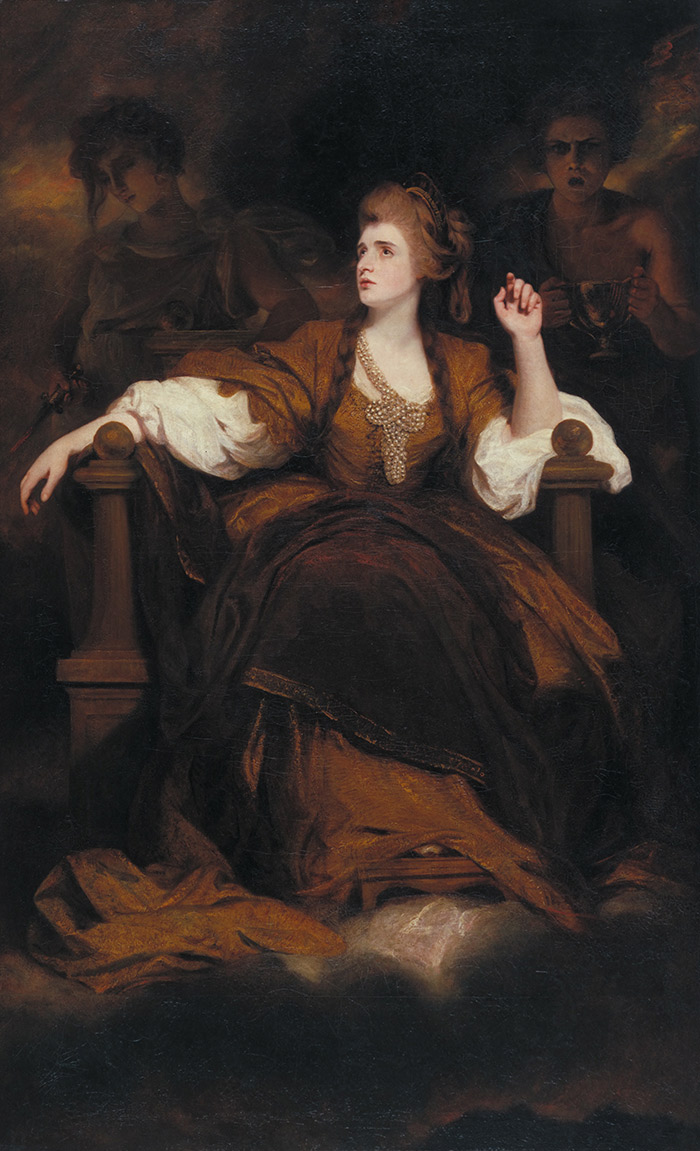
Sir Joshua Reynolds painted Sarah Siddons as the Tragic Muse (1783-1784), portraying the Welsh actress who became famous for her role as Lady Macbeth. The Huntington Library, Art Collections, and Botanical Gardens.
William Shakespeare: The painting depicts a pivotal moment in Shakespeare’s tragedy, Macbeth (act 1, scene 3) when the protagonist encounters the demonic trio who foretell his fate, “All hail, Macbeth, that shalt be king hereafter!” Fuseli clearly followed the playwright’s description when painting the witches’ mannish features: “… you should be women, And yet your beards forbid me to interpret / That you are so.” Visitors can view The Huntington’s first folio edition of Shakespeare’s collected plays, including Macbeth, in the Library’s permanent installation, “Remarkable Works, Remarkable Times.”
William Blake: Fuseli befriended and supported the English poet, artist and printmaker, who embraced his mentor’s visionary and eccentric style as well as his love of the obscure. The Huntington’s Blake works include his illuminated manuscript of the Book of Genesisamong many other treasures.
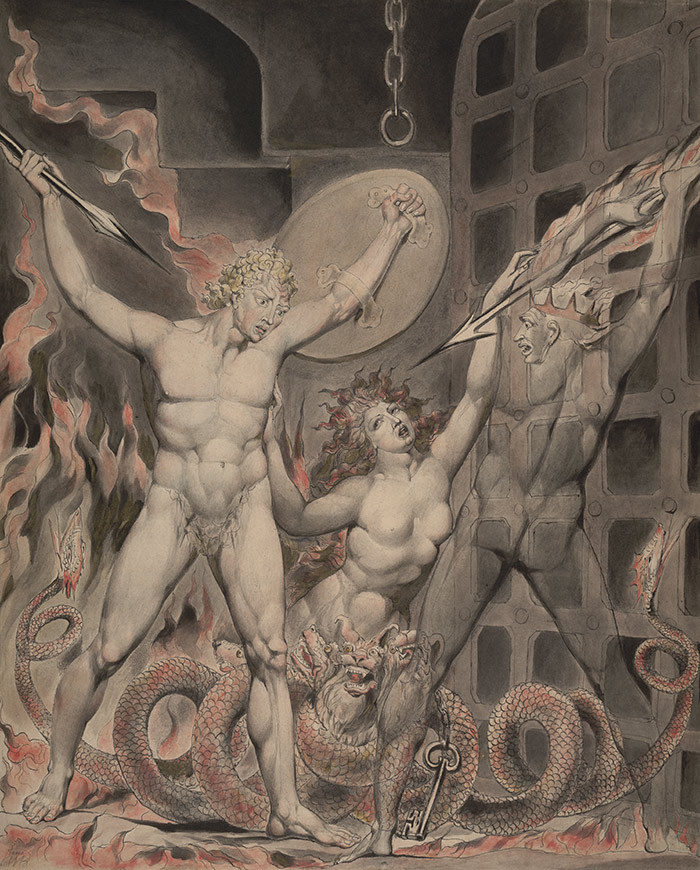
William Blake shared Fuseli’s passion for fantastic, supernatural themes, like this c. 1806 pen and watercolor Satan, Sin, and Death: Satan Comes to the Gates of Hell. The Huntington Library, Art Collections, and Botanical Gardens.
Sir Joshua Reynolds: Fuseli moved to London in his 20s where he caught the attention of painter Joshua Reynolds, the artist behind The Huntington’s Sarah Siddons as the Tragic Muse among other works in the collection. Reynolds praised Fuseli’s artistic talents, predicting that with study, Fuseli would become “the greatest painter of the age.” On Reynolds' advice, Fuseli made an art pilgrimage to Italy in the 1770s, where he studied the works of the great masters, especially Michelangelo and changed his name from his Swiss-born name Füssli, to the more Italian-sounding Fuseli.
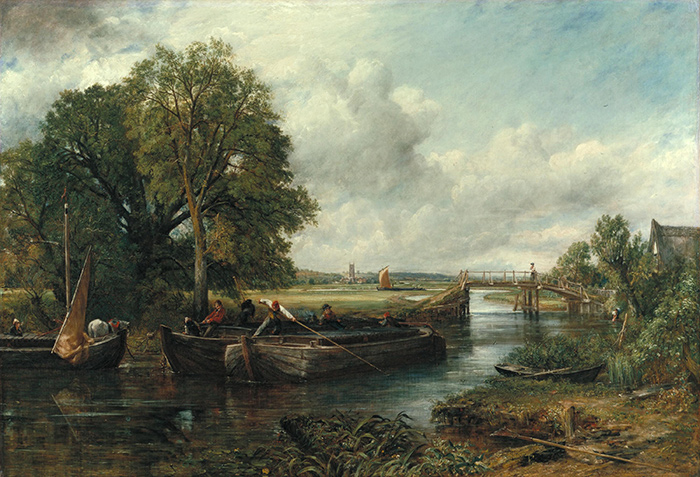
A student of Fuseli’s, John Constable went on to paint his monumental View on the Stour near Dedham (1822), on view in the Huntington Art Gallery. The Huntington Library, Art Collections, and Botanical Gardens.
John Constable: In 1790, Fuseli was elected to the Royal Academy, later becoming Professor of Painting and then Keeper. Among his students in his long career was John Constable, represented at The Huntington with the monumental View on the Stour near Dedham.
Fuseli’s finest works rarely come up for sale and The Huntington had long waited for such an opportunity. This Halloween is a time to celebrate a certain trio of enchantresses. All hail three witches…
Related content on Verso:
“Which Witch?” (Oct. 10, 2014)
"More Than Meets the Eye" (Dec. 16, 2014)
Diana W. Thompson is a freelance writer based in South Pasadena, Calif., and a regular contributor to Huntington Frontiers magazine.